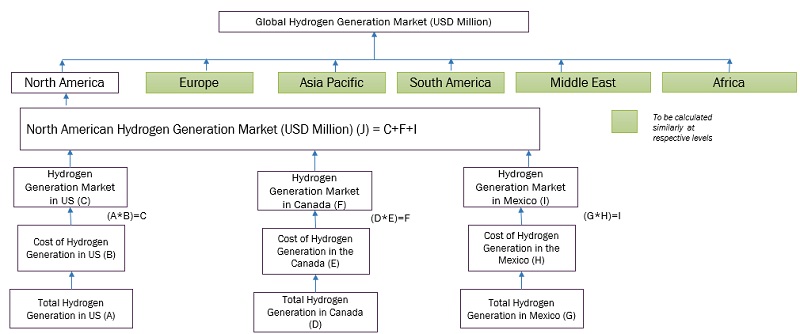The factors driving the growth for hydrogen generation market is Increasing hydrogen demand in the petroleum refineries and rising demand for hydrogen in transportation and power generation applications.
According to a new market research, ‘The global hydrogen generation market is projected to reach USD 263.5 Billion by 2027, at a CAGR of 10.5% between 2022 to 2027′.
Download PDF Brochure: https://www.marketsandmarkets.com/pdfdownloadNew.asp?id=494
Hydrogen is the simplest element exist on Earth and is a energy carrier. Hydrogen is rarely found by itself in nature and must be produced from substances that contain it. Hydrogen can store and distribute useable energy. The production of hydrogen can be done in a low-carbon manner using a variety of domestic resources, such as nuclear energy and renewable energy sources including wind, solar, geothermal, and hydroelectric power, as well as fossil fuels like coal and natural gas combined with carbon capture and storage. Utilizing hydrogen can enable zero or nearly zero emissions in transportation, integrated renewable energy systems, and other industrial and chemical operations. Emerging hydrogen markets within these sectors include data centers, ports, steel manufacturing, and medium- and heavy-duty trucks. The hydrogen generation market comprises revenues of companies that either store hydrogen or offer equipment to store. The operating expenditure and servicing revenue are not included in the scope of the study. For the estimation of hydrogen generation market size, the y-o-y annual capacity addition of blue hydrogen, grey hydrogen, and green hydrogen across the regions were estimated, and revenues of companies that produces and supply the hydrogen and technology related to that across various global regions are assessed in the study.

Green hydrogen is the fastest growing segment by source in the forecast period from 2022-2027. Companies like Siemens (Germany), Linde plc (Ireland), ENGIE (France), Air Liquide (France), and Air Products Inc. (US), Nel ASA (Norway), ITM Power (United Kingdom) are manufacturing hydrogen generation in mass production.
Transportation segment is the fastest growing segment by application segment in the forecast period. European Countries like Germany are more focused on fuel cell based electric vehicles and hydrogen storage infrastructure are driving the hydrogen energy storage market in this segment.
Many countries around the globe are imposing carbon taxes to reduce the carbon-dependency. For instance, The Safer Affordable Fuel-Efficient (SAFE) Vehicles Rule, which was finalized in March 2020 by the EPA and NHTSA, lowered the GHG emissions and CAFE criteria for MY 2021–2026 vehicles. Through the model year 2026, the 2020 rule tightens CAFE and CO2 emission criteria by a cumulative 1.5 percent year. In 2026, it is predicted that the combined GHG and CAFE standards for cars and trucks will be 202 g/mile of CO2 and 40.4 mpg.
Ask Sample Pages: https://www.marketsandmarkets.com/requestsampleNew.asp?id=494
Asia Pacific is expected to be fastest growing region the global hydrogen generation market
The Asia Pacific is estimated to be the fastest market for the hydrogen generation market, followed by North America. The North America is projected to be the second fastest-growing market during the forecast period. The oil refining and chemical industries and transportation and electricity sectors are experiencing significant demand for hydrogen in this region.
Browse Related Reports:

